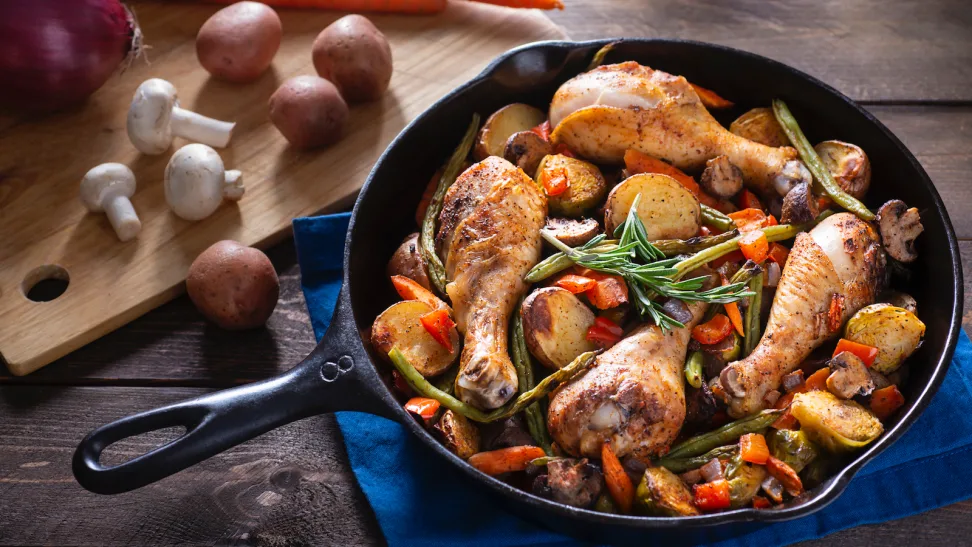When you rummaged through your mother’s kitchen, you must have discovered two different types of cookware: a sturdy, thick kadhai with molded handles that could easily substitute for a dumbbell for everyday exercise, and a smooth, thin kadhai with handles fastened with rivets. There is more to it than just how things look on the surface. The two distinct types of kadhais are created and employed for various uses. The latter is a pure iron Kadhai, as opposed to the thick, hefty one, which is made of cast iron.
Some people think cast iron cookware needs to be used carefully, while others think it requires too much upkeep. Once more, it’s a common belief among cookware fans that cast iron cookware is healthier than regular ironware.
Some claim that you cannot cook any acidic veggies in a cast iron pan (forget about adding tomatoes to your curry!). We are aware that too many voices can be deafening. To make the best choice, let’s dispel some myths and compare cast iron cookware to regular iron cookware.
Composition of Cast Iron Versus Iron Cookware and Cast Iron vs. Iron Manufacturing Process
Table of Contents
Cookware made of pure iron vs. cast iron
Carbon, iron, and silicon are combined to create cast iron. Iron makes up 93–96% of the alloy, while carbon and silicon make up the remaining 2-4%. To form the alloy into tools, it is poured into molds. Cast iron cookware does not have joints because of this.
Cookware made of cast iron typically has a gritty feel. However, some of them, such as Indus Valley, has been machine polished recently for a smoother appearance.
Utensils made of pure iron are shaped by pounding sheets of iron. They have a seamless, polished appearance. Most Iron Kadhais have handles that are attached to rivets. However, there are also some pure Iron Tawas available with seamless handles.
Cookware made of pure iron or cast iron shouldn’t be kept away from moisture because they are susceptible to rust. We advise drying more recent cookware immediately after washing it, followed by a light coating of oil. They do, however, eventually acquire a thick seasoning that prevents rusting. At that moment you can stop oiling and handle it like any other cookware.
Heat retention and even heating
Despite widespread belief, cast iron cookware does not distribute heat evenly throughout the pan. Cast iron cookware has a lower thermal conductivity than aluminum cookware. It implies that when you put the skillet on a burner, the area just around the flames would be extremely hot, but the rest of the pan would be fairly cold. But because they are hefty and thick, they hold onto the heat for a longer period. Your vegetables and fish will be perfectly seared thanks to this. Cooking slowly is made possible by the residual heat, which also saves fuel. Because it takes longer to cool than regular iron cookware, use extreme caution while picking it up to wash.
Cookware made of cast iron is healthier than iron: cast iron Kadai
Cast iron cookware is frequently mentioned as the healthier option. Cast iron cookware has a higher rate of iron transfer because cooking is slow and because cast iron is porous. Pure iron cookware, on the other hand, cooks more quickly and has a smoother finish. The iron transfer is therefore not very substantial. But take note that seasoning and the acidity of the meal during cooking have a significant impact on iron transfer. Because they are not well-seasoned, newer cast iron cookware transfers more iron to food than older ones. More information on the truths and fiction surrounding the health advantages of cast iron cookware can be found here.
Non-Sticky
When properly seasoned, cast iron cookware has higher stick resistance, making it a popular choice. But don’t anticipate it to behave exactly like a Teflon pan. You must still prepare food with some oil.
Cookware made of pure iron also needs oil. You may likely need a little bit more oil than you would for a cast iron pan due to its higher heat conductivity. The change is not obvious, though.
Durability
Based on its construction and tensile structure, cast-iron cookware is more durable than regular iron cookware. But that relies on the makeup of the molding. A part would break if it had not been sufficiently hardened. It will also shatter if you drop it from a height because it is brittle.
Cookware made of pure iron is shaped by beating solid iron sheets. Given enough force, it won’t break and is quite robust. It is more durable than cast iron in comparison.’
Cleaning Techniques
Cast iron and pure iron can be maintained and cleaned in essentially the same ways.
Contrary to popular belief, soap can be used to clean cast iron and iron cookware. After washing, pat it dry, then coat it lightly with oil to stop rusting. Our comprehensive article has further information on seasoning cast iron cookware. Cookware made of pure iron can also be cleaned using the same technique.
